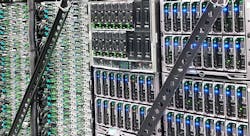The Role of PDU Design in Mission Critical Uptime
Marc Cram, Director of Sales for Server Technology, highlights what the role of PDU design means for mission critical uptime in today’s data centers.
Marc Cram, Director of Sales, Server Technology
The role of the rack mount power distribution in modern data center design is the story of an unheralded yet crucial component in the mission-critical powertrain. The era of efficient power design that began in the early 2000’s preceded an era of smarter and more efficient rack PDUs capable of supporting higher three-phase capacities. Even so, the rack mount PDU, and any of the associated connectivity between branch feeder and the IT equipment itself – cables, power cords, receptacles, and connectors – is conspicuously overlooked in serious discussions about data center design.
There is no standards body that takes the time to oversee the proper design treatment of this part of the infrastructure, no set of best practices that dictate which features separate a Tier II or Tier IV PDU application. My guess is that you would be hard-pressed to find an MOP or SOP governing the proper testing, commissioning, and operation of one of the most common electrical components in even the largest data centers.
Ongoing discussions about infrastructure topics such as thermal efficiency and alternate voltages drive improvements to design standards. In that spirit, here are four key design factors – resiliency, efficiency, security, and intelligence – that support a best-practices approach to power distribution at the rack. These factors are vendor neutral, and when combined, provide a forward-thinking rack-PDU architecture that is built to last.
Resilient. The first design factor is flexible power components, or devices that incorporate elements allowing it to adapt to future changes. If there is one constant in a data center, it is that change, whether it be to IT or physical infrastructure, is a permanent fixture on the horizon. The ability to adapt to those changes and minimize them means that you do not have to make expensive and disruptive changes to the rack electrical infrastructure. PDUs with receptacles that support multiple plug types can keep you ahead of future outlet requirements and changes.
Efficient. Good mission-critical facility design is predicated on the ability to make judicious use of valuable space within a data center. In most data center markets in the world, the high cost of real estate and construction have driven innovations in space utilization and rack layouts. A PDU takes up valuable space within the rack, and the ability to specify a unit with the smallest possible form factor means that space is used wisely. The width and depth of the unit must be compact, and the orientation of the outlets must support efficient wiring, including the grouping of separate phases in three-phase applications.
Establishing a new standard for rack power design and best practices means using the same principles that define best-practice data centers.
Secure. In rack power design, the ability to secure common connections is paramount to uptime. By common connections, I mean the physical connection between rack PDU, power cord, and IT device. Both ends of the power cord must be secured, just as it is important to secure a breaker, a bussway, or power panel. Often the security of these power connections is an afterthought, yet all the effort of the uninterruptible power supply is fruitless if a server becomes unplugged. This drives the design practice of physically securing power cords with PDUs that have high strength-mechanical locking devices at the outlet. These ensure high cord retention strength and a secure power connection.
Intelligent. Modern rack PDUs should also be as intelligent as the networks and systems that they support. From physical and environmental monitoring to on/off control of any of the outlets in the rack, most rack PDUs are accompanied with controllers and sensors that give them the ability to provide intelligent feedback and control of the unit itself. Somewhat in line with Mohr’s law’s influence across the industry, the compute capability of the average rack PDUs has increased while the price point to do so has decreased. Whether it is a fully hot-swappable onboard controller, environmental hazard warnings, or a linked network of BMS or DCIM enabled units, the ability to drive – and derive – intelligence at the rack is an essential component of rack power design.
Establishing a new standard for rack power design and best practices means using the same principles that define best-practice data centers. In order to make sure they’re resilient, efficient, secure and intelligent, you have to start with products that can provide all of those attributes. A rack PDU may not be where you start the design process, but with all of the power and flexibility demands it meets, it could be where you end up.
Marc Cram is Director of Sales for Server Technology.

